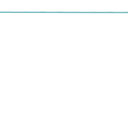Effects of Plantago lanceolata L. extract on full-thickness excisional wound healing in a mouse model.
Mots clés
Abstrait
Wound healing requires cells that increase both collagen production as a result of inflammatory events and regeneration of epithelial tissue. The Plantago species of herbs have been used in traditional treatment of skin disorders and infectious diseases, and digestive, respiratory, reproductive and circulatory conditions. We investigated the efficacy of different concentrations of Plantago lanceolata L. extract (PLE) for wound healing owing to its anti-inflammatory, anti-bacterial, anti-fungal, anti-oxidant, anti-ulcerative, analgesic and immunomodulatory properties. We used 72 mice in four groups of 18. An excisional 1 cm wound was created in the skin on the back of the mice in all groups. An ointment containing 10% PLE was applied to the wound in group 1, an ointment containing 20% PLE was applied in group 2 and vaseline was applied in group 3. In group 4, no treatment was applied to the wound. On days 7, 14, and 21 of the experiment, six animals in each group were sacrificed after the wounds were photographed and specimens from the wound sites were examined. On day 14, epithelialization was more prominent in group 2, while vascularization and collagen deposition was more advanced in groups 1 and 2 compared to the other groups. Immunohistochemical examination revealed that TGF-β1 expression was elevated on day 14 in all groups; however, this elevation was more limited in groups 1 and 2 than in groups 3 and 4. Although ANGPT-2 expression increased in groups 1 and 4 on day 14, it decreased significantly in groups 2 and 3. We found that different concentrations of PLE exhibited positive effects on wound healing. Application of 10% PLE ointment may be a useful strategy for wound healing.


